Heat treating is a significant step in creating high-quality tubing components and is an important part of the foundry process. It’s a technique designed to move your metal tube beyond casting, increasing its durability and longevity.
In this post, we’ll look at four specific heat treatments, what improvements they provide and how it aids in manufacturing your part.
What is heat treating?
Heat treating is a process that takes metal, heats then cools it, altering its physical properties. It is one of the best ways to achieve maximum usage and performance out of your metal material.
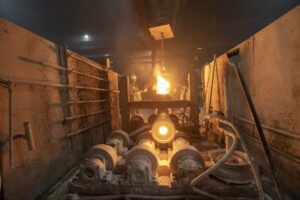
With the proper heat treatment (and the right expertise), a metal’s strength, hardness, toughness, ductility, and corrosion resistance will improve.
There are several heat treatment techniques that can be used. While each process provides benefits, how each attains them is different. The most often used methods include quenching and tempering, annealing, normalizing, and stress relief.
1. Quenching and tempering create better balance, and stability
Quenching occurs following centrifugal casting. This is when the metal is cooled quickly by air or by dipping it into a bath of liquid. It’s a critical part of heat treating and is commonly used to harden the metal material.
The solutions used to cool the metal are varied and include salt water, fresh water, oil, and air. Freshwater is preferred in most cases because it provides uniform cooling. If the solution cools too quickly, cracking will occur.
When the metal is quenched, its microstructure transforms. The microstructure developed through quenching is dependent on how quickly the material is cooled. The result is a harder metal but one that is often brittle and not easy to work with. That’s when tempering steps in.
https://www.youtube.com/watch?v=KHd1wdvcliI
At the Spuncast Centrifugal Foundry, a metal tube is quenched and prepared for tempering. Spuncast uses the preferred freshwater solution during quenching.
Tempering takes the metal after it’s been quenched and re-heats it using a high temperature, but just below the melting point. It’s then cooled again, this time by air. It removes the brittleness, the internal stresses, and creates a more desirable balance.
The degree of improved hardness and strength depends on the temperature used during the tempering process.
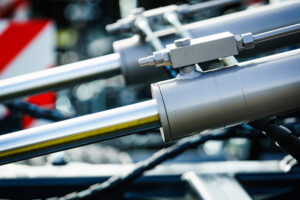
The combination of heating, cooling and reheating that quenching and tempering use is preferred for low alloy, high strength steel. The result is an improved, stable metal with properties needed for severe applications like mining, construction, and defense.
2. Annealing restores ductility and allows additional processing without cracking
Annealing also uses heating, soaking, and cooling, but this time the heating is more intense, reaching the metal’s upper critical temperature and held longer. The cooling is then done in an oven at a slower pace to achieve a more refined microstructure.
Cooling and heating rates can vary enormously depending on the desired results.
Annealing allows additional processing to the tube without cracking and:
- Softens the metal for cold working and forming
- Enhances machinability and toughness
- Releases mechanical stresses
- Improves electrical properties
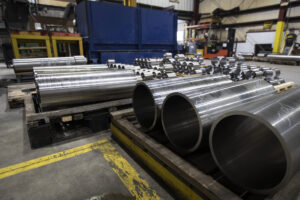
3. Normalizing provides uniformity and a fine-grained structure
Normalizing starts by heating the metal tube to a precise temperature, then cooling it by air. It differs from annealing in that it doesn’t require a special “soaking” vessel.
While normalizing on its own won’t achieve uniform internal refinement, it offers a reasonably cost-effective means for refining the metal’s microstructure.
In most cases, it is used in conjunction with annealing, except in the case of some specific grades of ferritic stainless. Metal cooled at the ambient temperature provided by the normalizing process is also easier to return to the foundry floor for machining or other necessary processes.
Normalizing typically is used to:
- Enhance machinability, and dimensional stability
- Reduce internal stresses and banding
- Improve ductility
- Generate a hardening or case hardening response

4. Stress relief reduces the risk of unintended dimensional changes
Stress relief is a heat treatment that reduces any inner material stresses within castings. After heating, slow cooling removes any existing stresses and prevents new ones from forming.
The stress relief process is similar to both normalizing and annealing but differs in the degree the tube is heated. Temperatures are brought up only high enough that internal stresses are removed and no further. Usually, it’s a much lower temperature.
It’s a process often used with high alloy stainless. When this metal undergoes stress relief, a considerable redistribution of the peak stresses occurs, causing tensile and yield strength to increase. There is also a reduction in movement when required machining operations occur.
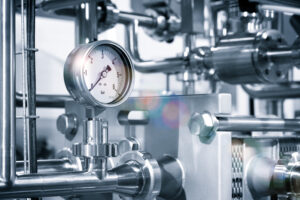
What’s the best method?
The best heat treatment method any metal may need depends on several factors. Engineers should ask themselves the following questions to determine which ones matter for their part.
- How will the casting be used?
- What metal or alloy will it be made from?
- What are the instructions provided in the material specs?
- What will the environment it will function in be like?
- What thermal or structural loads will it experience?
There is no one-size-fits-all approach when choosing the best heat treatment for metal components. Industrial, manufacturing and processing industries rely on those parts to be durable and dependable. Therefore, the end application must always be the first consideration.
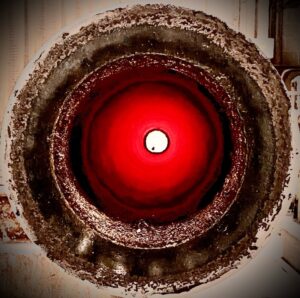
How many treatments does my tubular part need?
Though each process brings about a different result, in some cases, using a combination of treatments yields the best results.
When operating outside of the material specs, an experienced metallurgist can help you decide on the most appropriate heat treatment for your metal. To further manipulate the material, they may also suggest:
- Increasing or decreasing the temperature
- Controlling the pace and timing of the applied heat
- Speeding up or slowing down cooling
Because how metal is heat treated impacts the end product, often the process involves several rounds of any or all of these variations.
In-house heat treatments maximize efficiency
Because sending your tube to another facility takes time and costs money, using a foundry such as Spuncast that has full in-house capabilities will save you on both. You’ll also be working with experts who know your project from the start.

